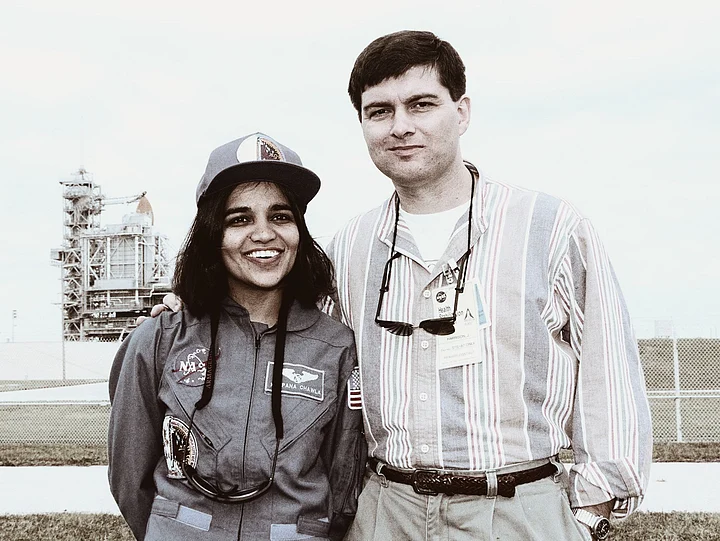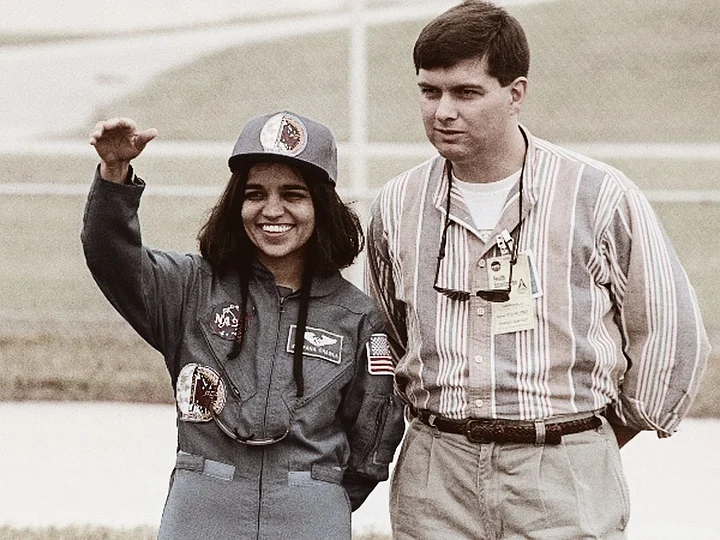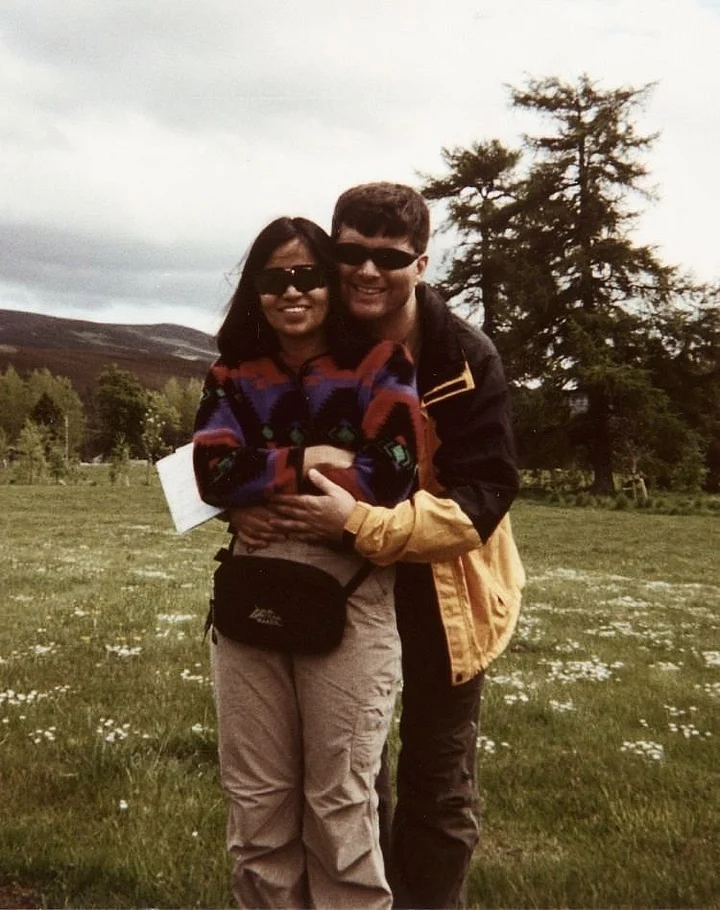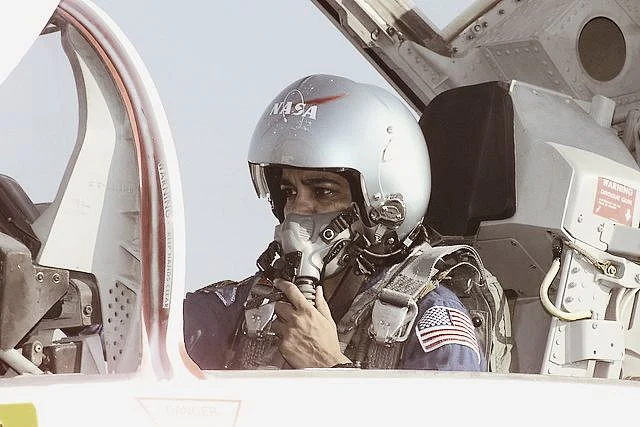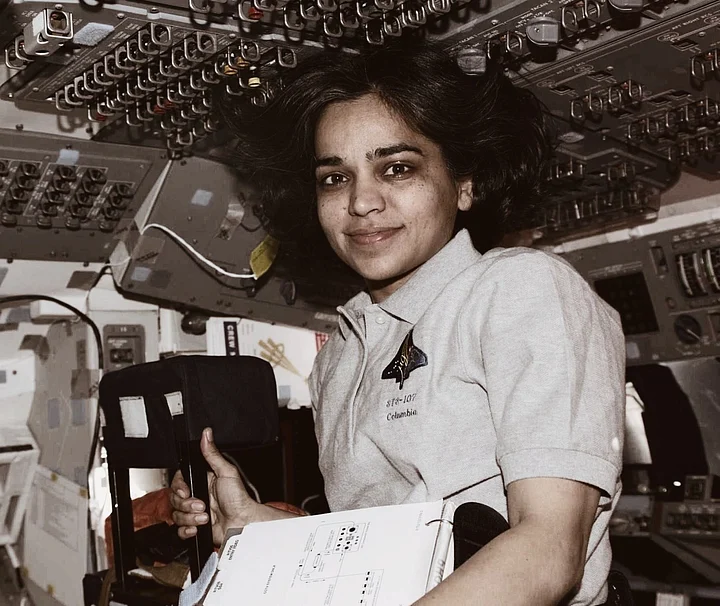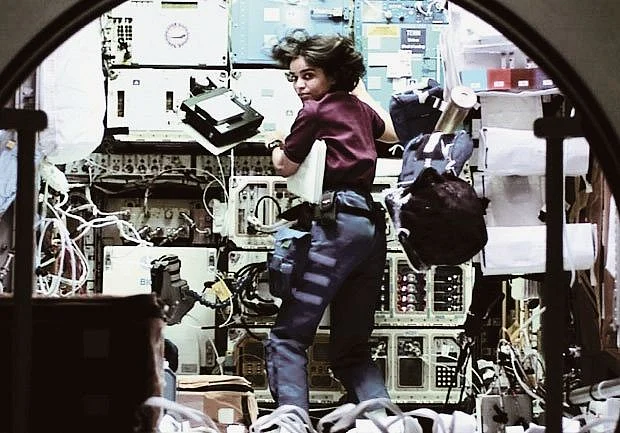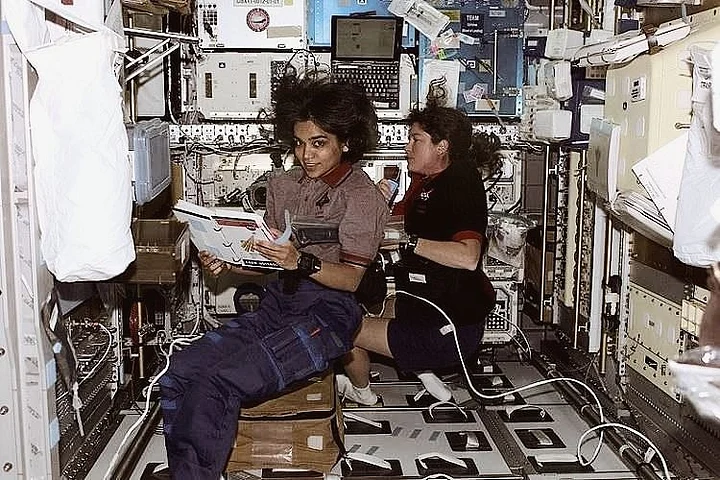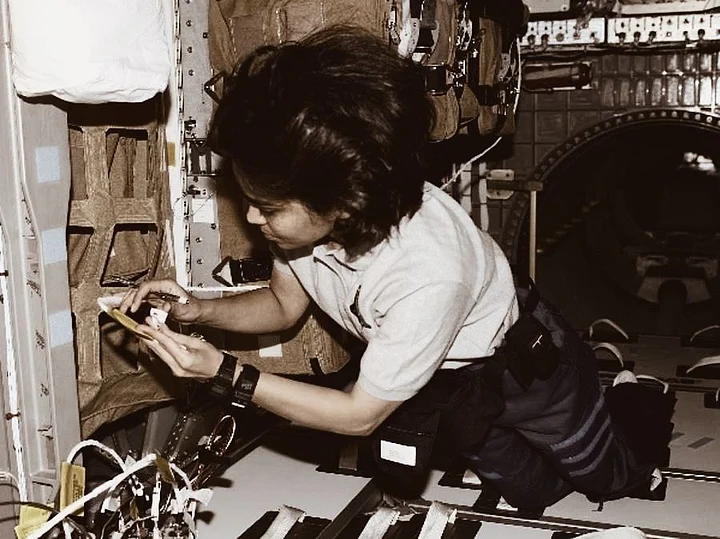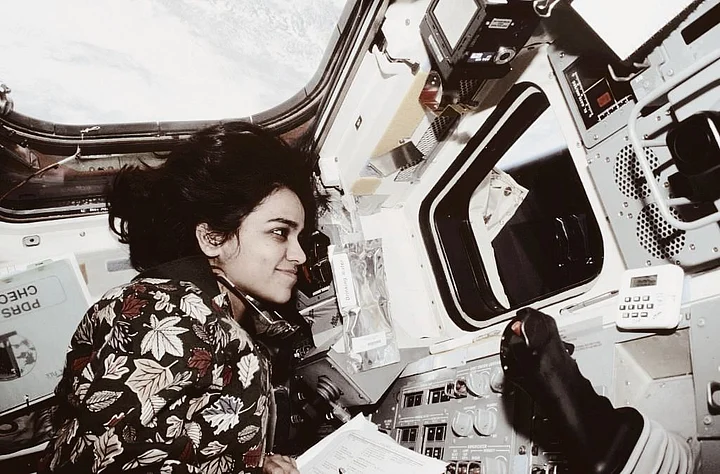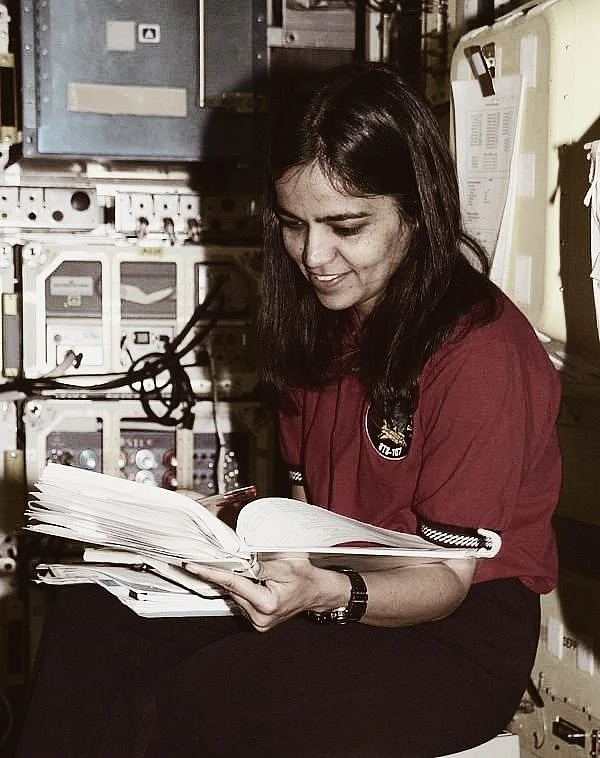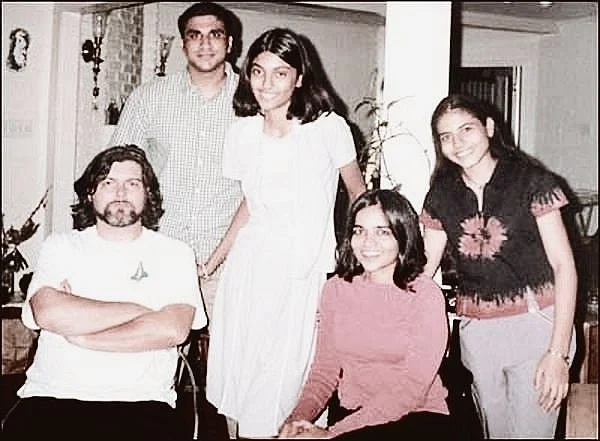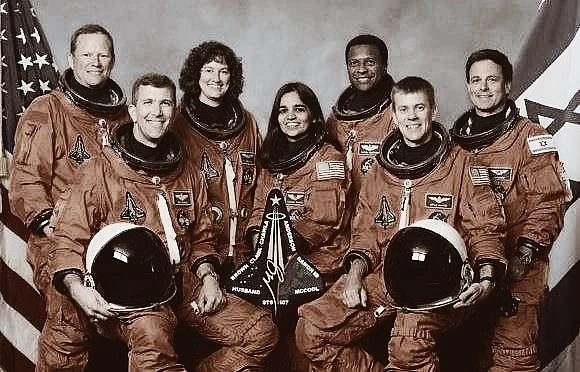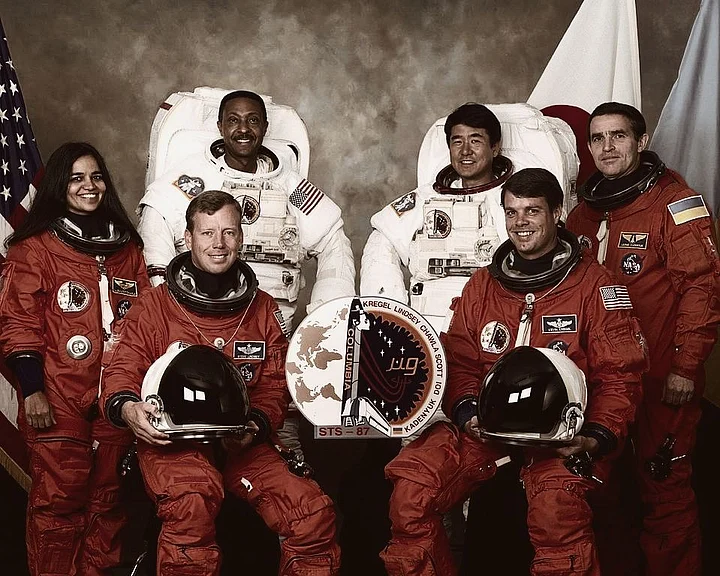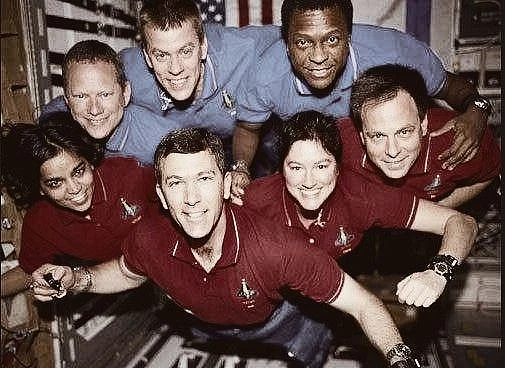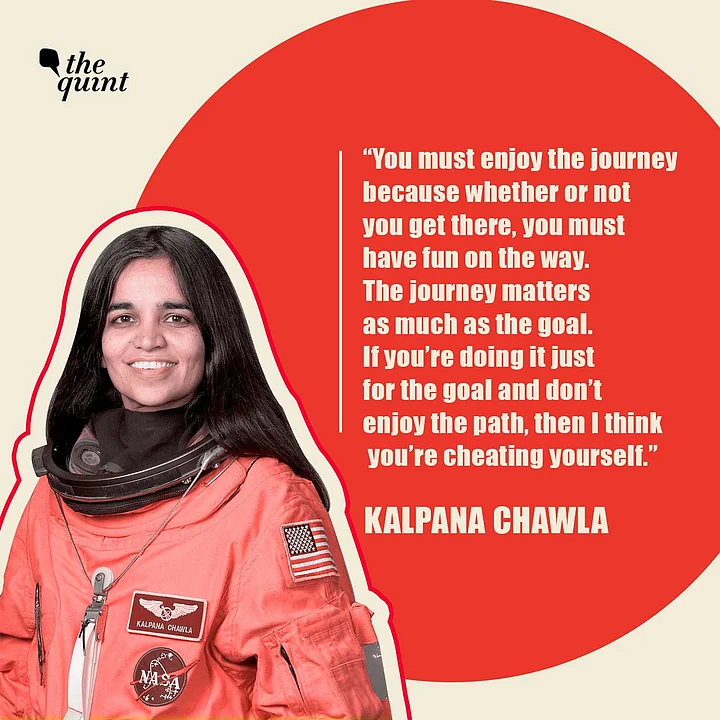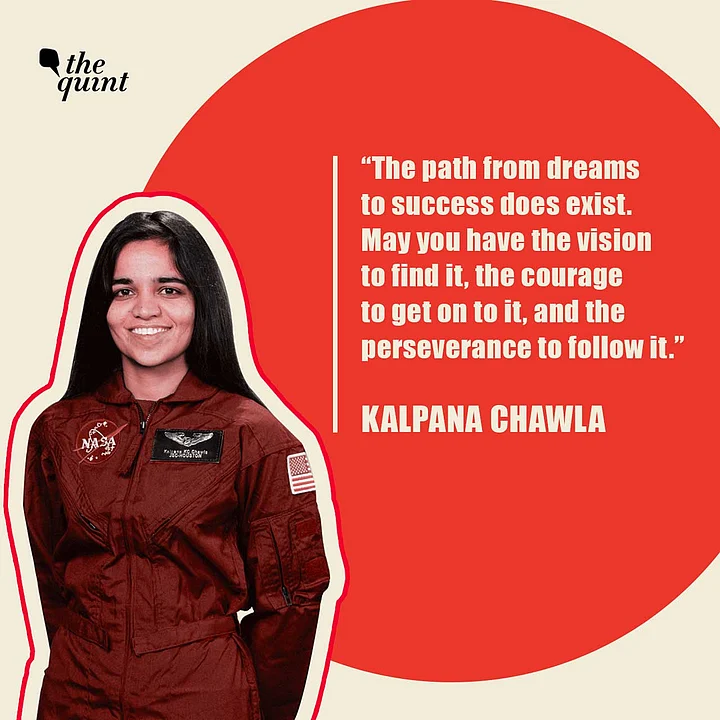(This story was originally published on 26 January 2022. It is being republished from The Quint's archives to mark International Women's Day)
One day a little girl, in a small town of India, was playing on her terrace when she saw a plane flying above her house. She raced across the terrace chasing the plane and kept waving at it, till it was out of sight. She was fascinated, curious.
At home, in school, she spent most of her time flying paper planes, reading about aeroplanes. And one day, she shocked her father, saying she wanted to fly an aircraft. She had made up her mind. She was determined, but not very sure of the path ahead.
But her lofty dreams and grit took her to space – not once but twice. She went on to spend 31 days, 14 hours and 54 minutes in space, creating history. This is the inspiring story of astronaut Kalpana Chawla – the first India-born woman in space.
A Tale of Big Dreams
Born on 17 March 1962, in Karnal, Haryana, the youngest of the four siblings had no formal name and was lovingly called Montu for the first few years. When her parents took her to enrol her in school, they were given a few options to decide and mention in the enrolment form. She ironically chose to be named Kalpana, meaning imagination.
Trainees at Karnal's flying club would often fly above her house. A fascinated Montu would run up to the terrace every time she heard the sound of planes. On Montu’s insistence, her father requested the Chief Flying Officer there for a joy ride. This ride on a glider gave wings to Kalpana's dreams.
Growing up, sleeping on the roof and watching stars, planets, constellations in the sky every night, she had made up her mind. And one day, she shocked her high school teacher. Determined to prove her wrong, Kalpana took her teacher by surprise.
Kalpana's parents Banarasi Lal Chawla and Sanyogita Chawla were very supportive of her education. After passing out of Tagore Bal Niketan in 1976, and completing her pre-engineering from Dayal Singh College, Kalpana travelled to Chandigarh for her higher studies.
She was the first woman to study aeronautical engineering, a rare stream chosen by the handful of women engineers then at the Punjab Engineering College. The college didn't have a girls' hostel then, but that did not come in her way.
Kalpana received her bachelor's degree from Punjab Engineering College in 1982. The aeronautical labs in Punjab Engineering College acted as launching pads, to propel her journey into space.
From Karnal to NASA to Space
Right after graduating, Kalpana applied to University of Texas, among others. When she received a letter from the university, she wasn't sure if her family would let her go overseas, but her father was her rock.
Kalpana moved to Arlington, United States, in September 1982.
Jean-Pierre Harrison met Kalpana on 2 September 1982, a day after she arrived in the USA, from India. He was a flight instructor and aviation author. Common interests like diving and flying got Kalpana and Harrison closer. And by December of 1983, they were married.
Kalpana obtained the Master of Science degree in aerospace engineering from the University of Texas at Arlington in 1984, and went on to earn a second Masters degree in 1986 and a PhD in aerospace engineering in 1988 from the University of Colorado at Boulder.
Steps to Success
In 1988, at 26, KC, as she was popularly known, started work at the NASA Ames Research Center in the area of powered-lift computational fluid dynamics. Her research concentrated on simulation of complex air flows encountered around aircraft. In 1993, Kalpana joined Overset Methods Inc, Los Altos, California, as Vice President and Research Scientist. She was responsible for development and implementation of efficient techniques to perform aerodynamic optimisation.
Kalpana held a Certificated Flight Instructor's license, and Commercial Pilot's licenses for single and multi-engine land and seaplanes, and Gliders, and instrument rating for airplanes. She enjoyed flying aerobatics and tail-wheel airplanes.
- 01/01
Kalpana Chawla
(Photo: NASA/Altered by The Quint)

Around this time, she became a US citizen. Kalpana applied to be part of NASA's Astronaut Corps in 1992 to take part in US space missions.
Selected by NASA in December 1994, Kalpana reported to the Johnson Space Center, in Houston in March 1995 as an astronaut candidate in the 15th Group of Astronauts. She began her training as an astronaut – to sustain in zero gravity and survive under water. She was trained for space walks, intricate operations of the shuttle, and crisis management at space.
After completing a year of training and evaluation, she was assigned as crew representative to work on technical issues for the Astronaut Office EVA/Robotics and Computer Branches. Her assignments included work on development of Robotic Situational Awareness Displays and testing space shuttle control software in the Shuttle Avionics Integration Laboratory. Kalpana was finally selected for her first space mission.
The Giant Leap
In November 1996, Kalpana was assigned as mission specialist and prime robotic arm operator on STS-87. At 35, Kalpana got her first chance to enter space.
On 19 November 1997, as part of the six-astronaut crew, she took off on board space shuttle Columbia flight STS-87, becoming the first India-born woman in space and the second India-born astronaut in space. It was a dream come true.
STS-87 was the fourth US Microgravity Payload flight and focused on experiments designed to study how the weightless environment of space affects various physical processes, and on observations of the Sun's outer atmospheric layers.
While in space, Kalpana had a long chat with the then Prime Minister IK Gujral, who congratulated her for her pioneering work that made India proud.
The space shuttle orbited the Earth 252 times, covering over 6 million miles. The 15-days-16 hours-and-34-minute-flight was a dedicated science and research mission. The trip was a success.
A Hero for the Youth
Kalpana started the tradition of sending two children from India to NASA every year. She helped send at least fourteen students to NASA.
- 01/02
Kalpana with her husband and NASA delegates from her school.
(Photo: Altered by The Quint)

- 02/02
Kalpana with her husband and NASA delegates from her school.
(Photo: Altered by The Quint)

The Ill-Fated Second Space Mission
Kalpana returned to earth on 5 December 1997. In January 1998, she was assigned as crew representative for shuttle and station flight crew equipment, and subsequently served as lead for Astronaut Office’s Crew Systems and Habitability section. In 2003, at 40, Kalpana went to space for the second time.
On 16 January 2003, she flew onboard the ill-fated space shuttle Columbia flight STS-107. The crew of seven took off for a 16-day flight from the Kennedy Space Centre.
Working 24 hours a day, in two alternating shifts, the crew successfully conducted approximately 80 experiments, including studying astronaut health and safety. After days of round-the-clock experiments, the crew was ready to return.
Columbia Disintegrates Over Earth
On 1 February 2003, during Columbia's re-entry into the Earth’s atmosphere, hot atmospheric air entered the shuttle's wing where there was a damage during takeoff. Kalpana died, along with the rest of the crew
when the spaceship disintegrated, just 16 minutes prior to its scheduled landing.
Apart from Kalpana, the crew included, Rick Husband, Laurel Clark, Ilan Ramon, David Brown, William McCool, and Michael Anders. Her mortal remains were scattered at Zion National Park, Utah.
Kalpana's Legacy Live On
Punjab Engineering College now has a hostel for girls named 'Kalpana Chawla Hostel'. University of Texas also has the Kalpana Chawla Hall, in memory of one it most-celebrated graduates.
Kalpana was posthumously awarded the Congressional Space Medal of Honour, the NASA Space Flight Medal, and the NASA Distinguished Service Medal, in 2004. NASA dedicated a supercomputer to KC. India's first satellite of METSAT-1 series was renamed Kalpana-1. One of the seven peaks of Columbia hills on Mars was named Chawla Hill.
Asteroids, roads, hospitals, colleges, streets are named after Kalpana. Almost two decades after her death, Kalpana's legacy lives on and she continues to inspire people.
- 01/03
(Graphics: The Quint/Deeksha Malhotra)

- 02/03
(Graphics: The Quint/Deeksha Malhotra)

- 03/03
(Graphics: The Quint/Deeksha Malhotra)

(At The Quint, we question everything. Play an active role in shaping our journalism by becoming a member today.)
